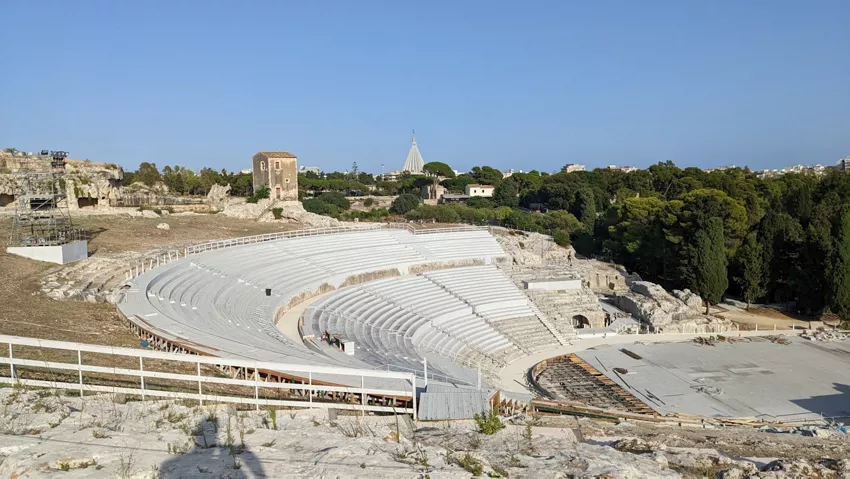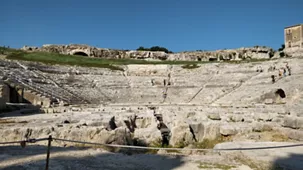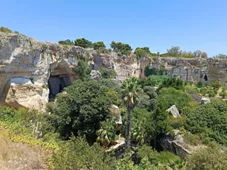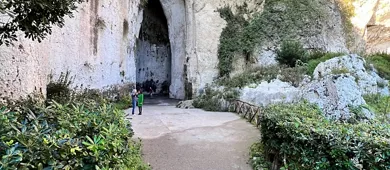This content was automatically translated. View the original text.




Overview
This archaeological area, one of the largest in the Mediterranean and recognised as a protected oasis, is now restored to its original layout from 1952-55, with the creation of tree-lined areas and repair of the access ways, and includes within its perimeter most of the classical monuments of Greek and Roman Syracuse. It is the symbol of Syracuse's urban expansion at the time of Gelon (5th century BC). For safety reasons, tourists are only allowed access to the Greek Theatre, carved into the rock of the Temenite hill, and to visit a part of the spectacularLatomia del Paradiso, with the famousEar of Dionysus. This provides an opportunity to admire the charm of a place where nature and man have designed scenarios of extraordinary beauty and strong emotional impact. The evocative setting of the Intagliatella and Santa Venera latomie and the Grotticelli necropolis greets visitors as they walk along Via Romagnoli, which borders the park enclosure to the south-east. To the north of the archaeological area is the panoramic viale Rizzo, which winds through the scenic crags of the Temenite hill before opening up to magnificent views of the city and the port. It overlooks the Greek Theatre, the Latomie del Paradiso, Intagliatella and Santa Venera, while running alongside the Grotticelli necropolis to the right, with numerous tombs of various periods and types excavated in the limestone, from the Archaic to the late Roman era. The so-called tomb of Archimedes stands out due to its monumental appearance. According to tradition, this funerary construction, dating back to Roman times, housed the remains of the great mathematician from the 3rd century BC, who is considered one of the greatest scientists in the history of mankind.